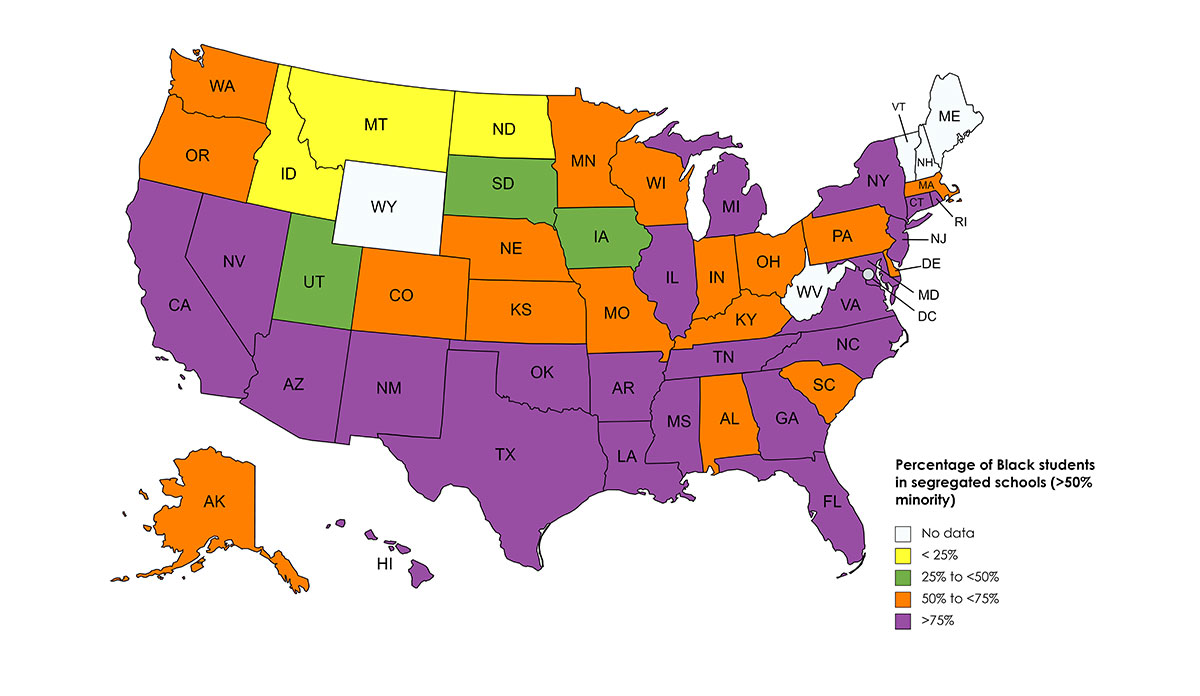The 1954 Brown v. Board of Education Supreme Court decision legally ended school segregation, but the segregation of U.S. Black students persists. Given the powerful role of education on the life course, the health consequences of school segregation are likely to be substantial. I conducted a study to assess a major health consequence of school segregation in three steps. First, the research demonstrated that attendance at desegregated schools leads to increases in high school graduation. Second, it compared the difference in life expectancy between people in the U.S. who graduate from high school and people who don’t graduate. Finally, it examined the extent of segregated schooling among Black and White students in the U.S. in different states. Segregated schooling is widespread among Black students in the U.S., and results in substantial loss of life.
The desegregation of U.S. schools following the Brown ruling was slow and often required court mandates to force change. Berkeley professor of public policy, Rucker Johnson, analyzed the consequences of all court-mandated desegregation orders for 868 school districts in 39 states between 1954 and 1990 for children born between 1945 and 1968. Eliminating other possible causes, Johnson demonstrated that each year that a Black child attended a desegregated school, the likelihood of his high school graduation increased by two percentage points—so 24% for 12 grades in a desegregated school. School desegregation essentially eliminated the gap between rates of graduation for Black and White students. Following the implementation of desegregation orders, racial segregation declined among both students and teachers. Student funding increased by $1,000 per student, and class size decreased substantially for Black students. Exposure to diversity and to minority students has many benefits. However, high proportions of minority students are often indicators of low-income communities, fewer school resources, and overall lack of opportunity.
Segregated schooling is a major cause of loss of life in the Black population in the U.S.
I then used 2018 U.S. mortality statistics, to assess life expectancy at age 25. I compared life expectancy among people with less than a high school education with life expectancy among people with a high school education or more. The age of 25 was chosen because most people have completed their education by this age. For a person with less than a high school education, life expectancy was 44.7 years at age 25; on average this person would live to the age of 69.7 years. For a person with a high school education or more, life expectancy was 53.6 years; on average this person would live to the age of 78.6 years. The large gap — 8.9 years—is comparable to the life expectancy loss associated with cigarette smoking.
So my study indicates 1) a causal link between school desegregation and high school graduation and 2) the association of high school graduation and a difference of almost nine years in life expectancy.
Finally, I examined where among states, rates of school segregation were highest and lowest. Among Black students in the U.S., 70.1% attended schools that were greater than 50% minority, compared with 21.4% of Whites. Among Black students, 27.3% attended schools that were greater than or equal to 90% minority, compared with 1.5% of Whites. Rates of Black school segregation (greater than 50% minority) are greatest in the Northeast (81.1%), next highest in the South (78.1%), next in the Midwest (68.4%), and lowest in the West (13.6%).
The segregated schooling of Black students in the U.S. is widespread. Moreover, legal means of redressing school segregation have been severely weakened in recent decades. The U.S. Civil Rights Commission has recommended that “Congress should prioritize incentivizing states to adopt equitable public school finance systems that provide meaningful educational opportunity, promote student achievement for all students, and close achievement gaps where they exist; increase federal funding to supplement state funding with a goal to provide meaningful educational opportunity on an equitable basis to all students in the nation’s public schools; and promote the collection, monitoring, and evaluation of school spending data to determine how funds are most effectively spent to promote positive student outcomes.”
Segregated schooling is a major cause of loss of life in the Black population in the U.S. Known remedies to school segregation must be implemented to eliminate this root of health inequity.
Map created from data provided by the author














